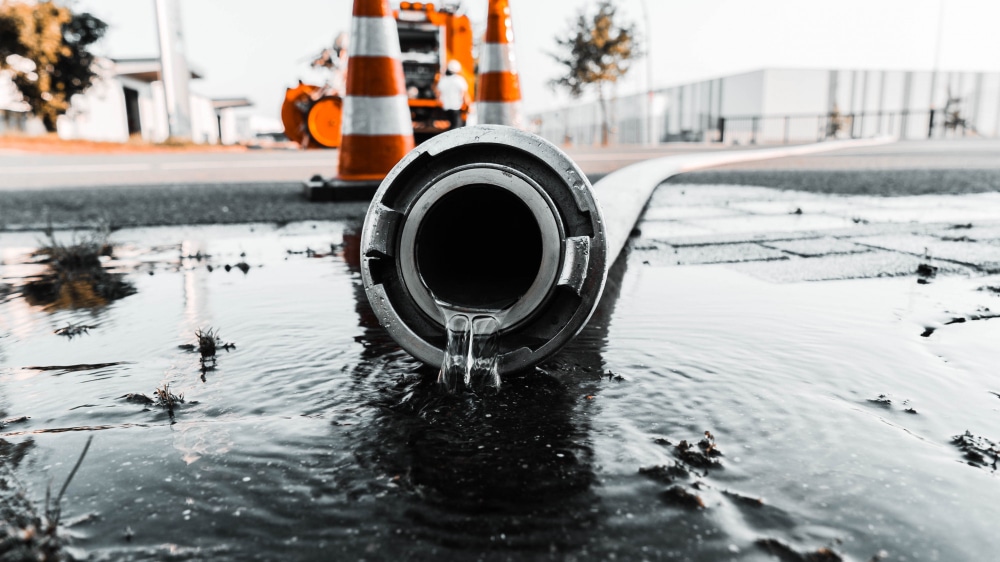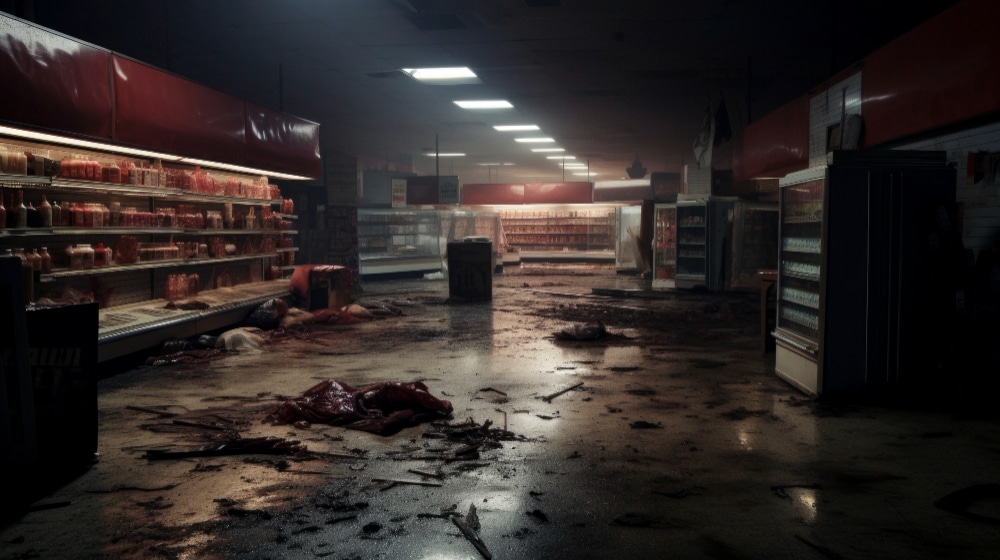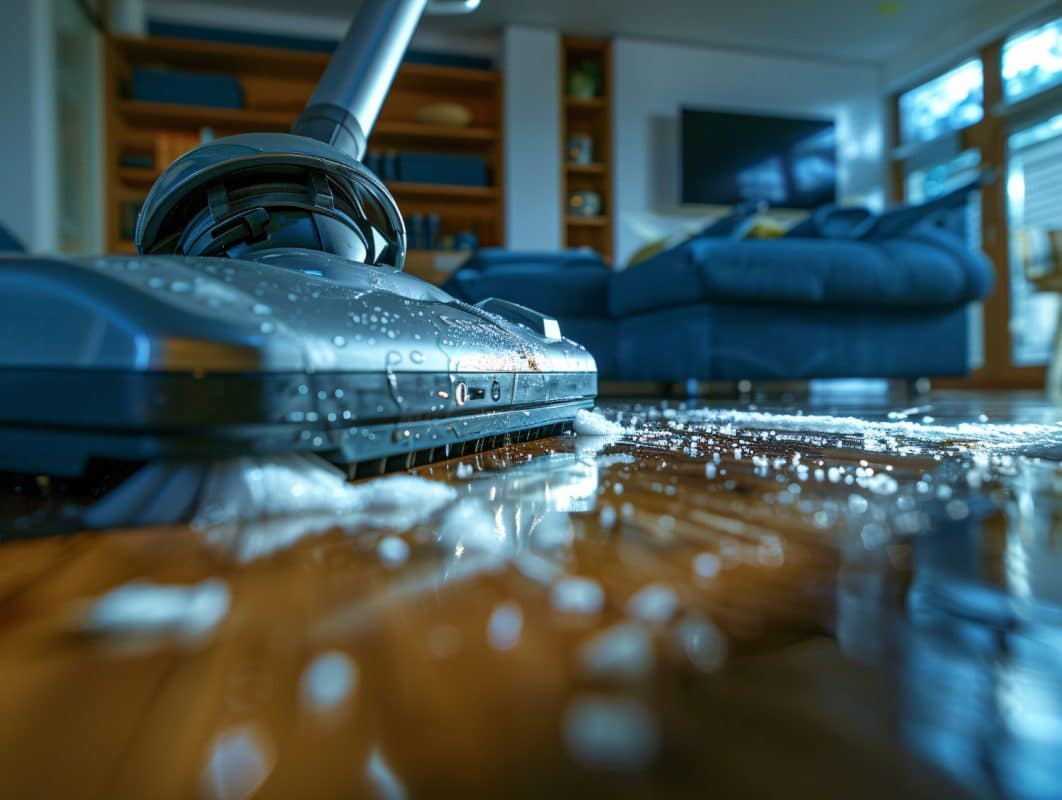Water damage can be a nightmare for both residential and commercial spaces, but understanding the process of water extraction can help demystify the situation. Whether it’s a burst pipe, roof leak, or natural disaster, quick and effective water extraction is essential to prevent further damage and the growth of mold and mildew. In this complete guide, we will walk you through the ins and outs of water extraction, providing invaluable tips and insights for both homeowners and business owners alike.
From understanding the types and categories of water damage to knowing the equipment and techniques used in extraction, this guide covers it all. We’ll also explore the importance of hiring professional water extraction services and the benefits they offer. Discover how to assess the extent of the damage, prioritize restoration efforts, and ensure that your property is thoroughly dried and restored to its pre-damage condition.
Don’t let water damage overwhelm you – this guide has got you covered. So, let’s dive in and unravel the mysteries of water extraction together.
Understanding the Different Types of Water Damage
Water damage can occur in various forms, and understanding the different types is crucial in determining the appropriate course of action for water extraction. There are three main types of water damage:
- Clean Water Damage: This type of water damage occurs when the source of water is clean and does not pose an immediate health risk. It may result from a malfunctioning appliance, a leaking faucet, or rainwater. Although clean water damage may seem less severe, it still requires prompt attention to prevent mold and mildew growth.
- Gray Water Damage: Gray water damage refers to water that is slightly contaminated and may contain chemicals or bacteria. This can result from a malfunctioning dishwasher or washing machine, an overflowing toilet with urine, or water from a fish tank. Gray water damage requires caution during extraction due to the potential health risks it poses.
- Black Water Damage: The most severe type of water damage is black water damage, which involves highly contaminated water that poses serious health risks. This can result from sewage backups, flooding from rivers or streams, or stagnant water that has been left untreated for an extended period. Extraction of black water requires specialized equipment and protective gear.
Understanding the different types of water damage is essential because it helps determine the severity of the situation and the necessary precautions to be taken during the extraction process. It is crucial to identify the type of water damage before proceeding with any restoration efforts.
The Importance of Quick Response in Water Extraction
When it comes to water damage, time is of the essence. The longer water sits in your property, the more damage it can cause. Quick response is vital in water extraction for several reasons:
- Preventing Structural Damage: Water can weaken the structural integrity of your property, leading to costly repairs. Prompt water extraction helps minimize the risk of structural damage, preserving the foundation, walls, and other essential components.
- Preventing Mold and Mildew Growth: Moisture creates the perfect environment for mold and mildew to thrive. These microorganisms not only cause unpleasant odors but can also pose serious health risks. Timely water extraction helps prevent the growth of mold and mildew, safeguarding the health of occupants.
- Preserving Belongings: Water damage can wreak havoc on your personal belongings, including furniture, electronics, and important documents. Quick water extraction can save these items from irreversible damage, increasing the chances of successful restoration.
- Minimizing Restoration Costs: The longer water remains in your property, the more extensive the damage becomes. Quick water extraction can significantly reduce the overall restoration costs by preventing further damage and the need for extensive repairs.
By responding quickly to water damage and initiating the extraction process as soon as possible, you can mitigate the negative impacts and ensure a smoother restoration process.

Tools and Equipment Needed for Water Extraction
Effective water extraction requires the use of specialized tools and equipment designed to remove water efficiently and thoroughly. Here are some of the essential tools used in the water extraction process:
- Water Extractors: Water extractors, also known as wet vacuums, are powerful machines designed to remove water from various surfaces. They come in different sizes and capacities, allowing for efficient extraction of water from carpets, floors, and upholstery. Water extractors can be either portable or truck-mounted, depending on the scale of the damage.
- Dehumidifiers: Dehumidifiers play a crucial role in the drying process after water extraction. These machines help remove excess moisture from the air, preventing the growth of mold and mildew. Dehumidifiers are available in different sizes and capacities, and their selection depends on the extent of the water damage.
- Air Movers: Air movers, also known as fans or blowers, facilitate the evaporation of moisture from surfaces. They create airflow that accelerates the drying process, ensuring that all affected areas are thoroughly dried. Proper placement and positioning of air movers are essential for efficient drying.
- Moisture Meters: Moisture meters are handheld devices used to measure the moisture content of materials such as walls, floors, and ceilings. These tools help identify hidden moisture pockets and determine the progress of the drying process. Moisture meters are essential for ensuring that all affected areas are completely dry before restoration begins.
In addition to these primary tools, water extraction professionals may also utilize specialized equipment such as infrared cameras for moisture detection, hygrometers for measuring humidity levels, and thermal imaging cameras for identifying hidden water damage.
By employing the right tools and equipment for water extraction, professionals can ensure a thorough and efficient drying process, leaving your property clean, dry, and ready for restoration.
Step-by-step process of water extraction
Water extraction is a critical step in the restoration process after water damage occurs. It involves removing standing water, drying out affected areas, and restoring the property to its pre-damage condition. Understanding the step-by-step process of water extraction can help you tackle the situation efficiently and effectively.
- Assess the damage: Before beginning the water extraction process, it’s important to assess the extent of the damage. This involves identifying the source of the water, determining the affected areas, and categorizing the water damage. There are three categories of water damage: clean water (Category 1), grey water (Category 2), and black water (Category 3). Each category requires different precautions and approaches to ensure proper extraction and restoration.
- Remove standing water: The next step is to remove the standing water from the affected areas. This can be done using various equipment such as submersible pumps, wet vacuums, or water extraction machines. It’s crucial to act quickly to prevent further damage and minimize the risk of mold and mildew growth. The water extraction equipment should be used in a systematic manner, starting from the lowest point of the affected area and working towards the exit point.
- Dry out affected areas: Once the standing water has been removed, it’s important to dry out the affected areas thoroughly. This involves using air movers and dehumidifiers to evaporate moisture and reduce humidity levels. It’s essential to create proper airflow and ventilation to accelerate the drying process. Additionally, specialized equipment such as moisture meters and infrared cameras can be used to monitor the moisture levels and ensure that the affected areas are completely dry.
- Clean and sanitize: After the affected areas have been dried out, it’s important to clean and sanitize them to prevent the growth of mold and bacteria. This involves using professional-grade cleaning solutions and antimicrobial treatments to disinfect the surfaces. Pay special attention to hidden or hard-to-reach areas, as they are more susceptible to mold growth. Proper cleaning and sanitization will help ensure a safe and healthy environment.
- Restore and repair: Once the water extraction and drying process is complete, the next step is to restore and repair any damaged structures or materials. This may involve replacing damaged drywall, flooring, or insulation. It’s important to work with experienced professionals who can assess the extent of the damage and provide appropriate solutions for restoration. Timely repairs will help prevent further damage and ensure that your property is restored to its pre-damage condition.
By following this step-by-step process of water extraction, you can effectively mitigate water damage and prevent further complications. However, it’s important to note that water damage restoration can be a complex and time-consuming process. In many cases, it’s best to seek professional water extraction services to ensure thorough and efficient restoration.
Dealing with water damage in residential spaces
Water damage in residential spaces can be a distressing experience for homeowners. Whether it’s a flooded basement, leaking roof, or burst pipe, it’s important to take immediate action to prevent further damage and protect your home.
- Ensure safety: The first and foremost priority when dealing with water damage in residential spaces is to ensure the safety of yourself and your family. If there is standing water, be cautious of electrical hazards and avoid contact with the water. If necessary, shut off the power supply to affected areas to eliminate the risk of electrical shock.
- Stop the source: Once safety is ensured, the next step is to stop the source of water if possible. For example, if you have a burst pipe, turn off the main water supply to prevent further flooding. If the water damage is caused by a roof leak, take immediate measures to temporarily cover the affected area and prevent additional water from entering.
- Call for professional help: While you can take some initial steps to mitigate water damage, it’s crucial to call for professional water extraction services as soon as possible. Experienced professionals have the necessary equipment and expertise to assess the extent of the damage, extract water efficiently, and restore your home to its pre-damage condition. They can also help identify any hidden or structural damage that may not be immediately apparent.
- Document the damage: Before any restoration work begins, it’s important to document the damage for insurance purposes. Take photographs or videos of the affected areas, including any damaged belongings or valuable items. This will help support your insurance claim and ensure that you receive appropriate compensation for the water damage.
- Prevent mold growth: One of the biggest risks associated with water damage is the growth of mold and mildew. These can pose serious health risks and further damage your home. To prevent mold growth, ensure proper ventilation and airflow in the affected areas. Use dehumidifiers and air movers to reduce moisture levels. If necessary, hire professional mold remediation services to thoroughly inspect and treat your home for mold.
Dealing with water damage in residential spaces can be overwhelming, but with prompt action and professional help, you can effectively mitigate the damage and restore your home. Remember to prioritize safety, document the damage, and seek professional water extraction services to ensure thorough restoration.

Dealing with water damage in commercial spaces
Water damage in commercial spaces can have significant financial implications and disrupt business operations. Whether it’s an office building, retail store, or warehouse, it’s crucial to address water damage promptly to minimize the impact on your business.
- Emergency response plan: Having an emergency response plan in place is essential for commercial spaces. This plan should outline the necessary steps to be taken in the event of water damage, including contact information for professional water extraction services and insurance providers. Educate your employees on the emergency response plan to ensure a prompt and coordinated response.
- Protect valuable assets: Commercial spaces often house valuable equipment, inventory, and important documents. In the event of water damage, it’s crucial to protect these assets from further damage. Move any valuable items to a safe and dry location if possible. If not feasible, cover them with waterproof materials to prevent water infiltration.
- Minimize business disruption: Water damage can disrupt business operations and result in financial losses. To minimize business disruption, consider relocating employees to unaffected areas or implementing remote work arrangements temporarily. Communicate with your clients or customers about any potential delays or disruptions in services. This proactive approach will help maintain customer satisfaction and minimize the impact on your business.
- Work with professionals: When it comes to water damage in commercial spaces, it’s essential to work with experienced professionals who specialize in commercial water extraction and restoration. They have the necessary equipment, resources, and expertise to handle large-scale water damage and ensure efficient restoration. They can also provide guidance on the best strategies to prevent future water damage and mitigate risks.
- Insurance coverage: Commercial spaces should have appropriate insurance coverage to protect against water damage and its financial implications. Review your insurance policy to understand the coverage and exclusions related to water damage. Notify your insurance provider as soon as possible to initiate the claims process. Provide them with all the necessary documentation, including photographs, videos, and estimates from professional water extraction services.
Dealing with water damage in commercial spaces requires a proactive and strategic approach. By having an emergency response plan, protecting valuable assets, minimizing business disruption, working with professionals, and ensuring proper insurance coverage, you can effectively navigate the challenges of water damage and restore your commercial space.
Preventive Measures for Water Damage
Water damage can occur unexpectedly, but there are preventive measures you can take to minimize the risk. Regular maintenance and inspections are key to identifying potential issues before they escalate into major problems. Here are some preventive measures to consider:
- Check and maintain your plumbing systems: Inspect your pipes, faucets, and water supply lines regularly for leaks or signs of wear and tear. Replace any damaged or outdated components to prevent potential water damage.
- Ensure proper drainage: Make sure your gutters and downspouts are clear of debris and working efficiently to direct water away from your property. Consider installing a sump pump in areas prone to flooding.
- Maintain your roof: Regularly inspect your roof for damaged or missing shingles, cracks, or leaks. Repair any issues promptly to prevent water from seeping into your property.
- Install a water leak detection system: Invest in a water leak detection system that can alert you to any leaks or excess moisture in your property. These systems can help you catch water damage early and minimize the extent of the damage.
- Insulate pipes in colder climates: In regions with freezing temperatures, insulate your pipes to prevent them from freezing and potentially bursting. Frozen pipes can cause significant water damage when they thaw.
By implementing these preventive measures, you can significantly reduce the risk of water damage and the need for extensive water extraction in the future.
Hiring Professional Water Extraction Services
While some minor water damage incidents can be managed on your own, more severe cases require the expertise of professional water extraction services. Here’s why hiring professionals is crucial:
- Expertise and experience: Professional water extraction services have the knowledge, skills, and experience to handle water damage situations effectively. They are trained in the latest techniques and have access to specialized equipment to extract water efficiently.
- Quick response time: Time is of the essence when it comes to water damage. Professional services understand the urgency and respond quickly to mitigate the damage. They have the manpower and resources to tackle large-scale water extraction projects promptly.
- Thorough assessment and restoration: Professionals conduct a thorough assessment of the extent of the water damage, ensuring that no hidden pockets of moisture are left behind. They use advanced moisture detection equipment to identify areas that may not be visible to the naked eye. Once the extraction is complete, they facilitate the drying and restoration process to bring your property back to its pre-damage condition.
- Mold and mildew prevention: One of the major risks associated with water damage is the growth of mold and mildew. Professionals understand the importance of proper drying techniques and take necessary measures to prevent mold growth. This helps maintain a safe and healthy environment for you and your family or employees.
- Insurance assistance: Dealing with insurance companies can be overwhelming after a water damage incident. Professional water extraction services often have experience working with insurance companies and can provide the necessary documentation and evidence required for a smooth claims process. They can also help you navigate the complex insurance procedures and ensure you receive the maximum compensation you are entitled to.
By hiring professional water extraction services, you can ensure that the water damage is addressed promptly and effectively, minimizing further damage and the potential for long-term issues.

Conclusion: Importance of Water Extraction for a Safe and Healthy Environment
Water damage can have serious consequences for both residential and commercial spaces. From structural damage to mold growth, the effects can be long-lasting and harmful to your health. That’s why water extraction is a critical step in the restoration process.
By understanding the preventive measures you can take to minimize the risk of water damage and the benefits of hiring professional water extraction services, you can ensure that your property is properly restored to its pre-damage condition. Acting quickly and seeking professional assistance can make all the difference in preventing further damage and maintaining a safe and healthy environment.
Remember, water extraction is not a task to be taken lightly. It requires expertise, specialized equipment, and thorough assessment to ensure effective removal of water and moisture. So, if you find yourself facing water damage, don’t hesitate to reach out to professional water extraction services to handle the job. Your property and your peace of mind are worth it.
Take control of water damage and demystify the process of water extraction. With the knowledge and insights gained from this guide, you can be better prepared to handle water damage incidents and protect your property from further harm. Stay proactive, stay informed, and ensure a safe and dry environment for yourself and those around you.

